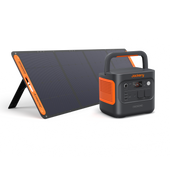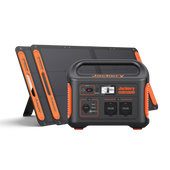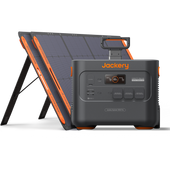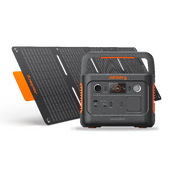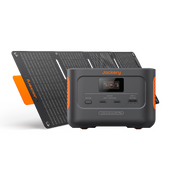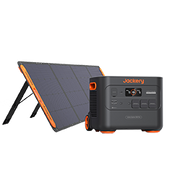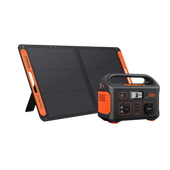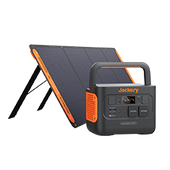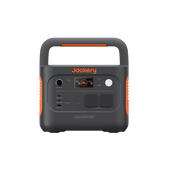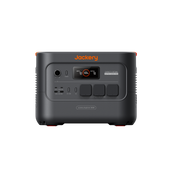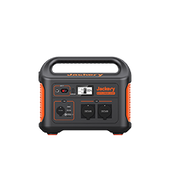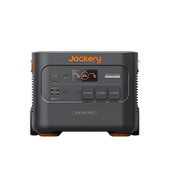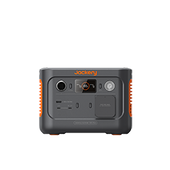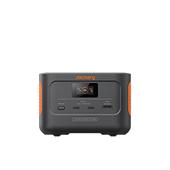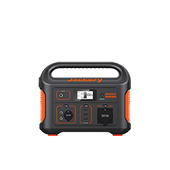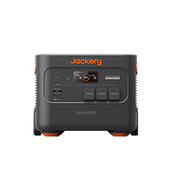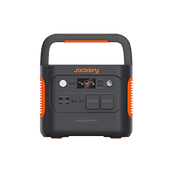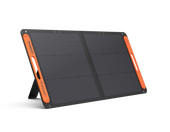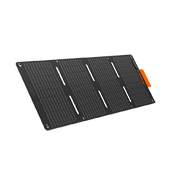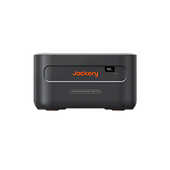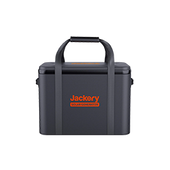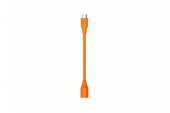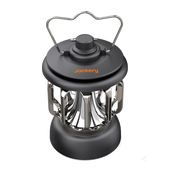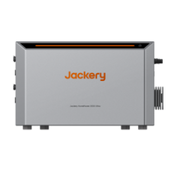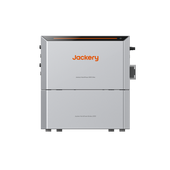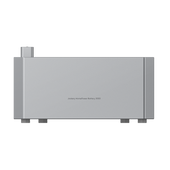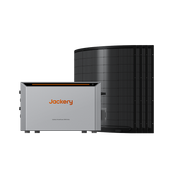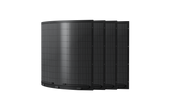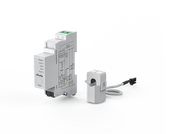Understanding Why Solar Energy is Vital in the EU
Unleash the sun's power and embrace a brighter future with solar energy in the European Union! The EU is harnessing the immense potential of solar power to revolutionize its energy landscape. The power station is illuminating the path toward a sustainable tomorrow with its ability to reduce carbon emissions, provide stable electricity, and enhance energy independence. Join the solar revolution and participate in the clean energy movement shaping the EU's future.
Get ready to bask in the radiance of solar solutions and embark on a greener, brighter, and more resilient journey toward a sustainable EU. Let's harness the sun's power and shine a light on a sustainable future!

EU Solar Production and Growth
Solar energy production in Europe has experienced significant growth in recent years. Here are some statistics that highlight the importance of solar energy in the region:
- Installed Capacity:As of 2022, the total installed solar capacity in the EU amounted to 41.4 GW. This includes residential and commercial solar installations and is 47 percent more than 28.1 GW in 2021.
- Leading Solar Producers: Germany maintained its position as the top installer among the EU countries, adding 7.9 GW of solar capacity in 2022. Spain followed closely with 7.5 GW, while Poland, the Netherlands, and France contributed 4.9 GW, 4.0 GW, and 2.7 GW, respectively.
- Solar Energy Generation:The cumulative solar power generation fleet in the EU experienced a 25% growth in just one year, reaching 208.9 GW in 2022 compared to 167.5 GW in 2021.
- The installation of 41.4 GW of solar capacity is significant, as it has the potential to power approximately 12.4 million European households. Furthermore, it is equivalent to displacing 4.45 billion cubic meters of natural gas or the capacity of 102 LNG (liquefied natural gas) tankers.
The capacity of solar energy installations in the EU has witnessed remarkable growth, driven by technological advancements, supportive policies, and increasing environmental awareness.
- Rapid Expansion: This year, the EU has witnessed a rapid expansion in solar energy installations. A newly published study by energy think tank Ember indicates that wind and solar power reached a significant milestone in the European Union (EU) in 2022. Together, they accounted for a record-breaking one-fifth, or 22%, of the EU's electricity generation, surpassing fossil gas (20%) for the first time.
- Market Share: Solar energy has gained a substantial market share in the EU's energy mix. It currently represents a significant percentage of the total electricity generation capacity in the region.
- Distributed Generation: The EU has seen a rise in distributed solar generation, with an increasing number of households, businesses, and communities adopting solar panels to generate clean energy. This trend promotes decentralization and supports transitioning to a more sustainable and resilient energy system.
Solar Energy In The EU's Renewable Energy Targets
The EU has set ambitious renewable energy targets to transition to a low-carbon and sustainable future. Solar energy plays a crucial role in achieving these targets.
- Renewable Energy Directive: Representatives from the European Parliament and the Council, acting on behalf of the European Union (EU) member states, have reached an agreement regarding renewable energy targets. Under this agreement, the EU has committed to sourcing 42.5% of its energy from renewable sources such as wind and solar by 2030. There is also a possibility of further increasing this target to 45%.
- National Action Plans: Member states must develop National Action Plans outlining how to achieve their renewable energy targets. These plans often include specific measures to promote solar energy, such as feed-in tariffs, tax incentives, and streamlined permitting processes.
- REPowerEU Plan: The REPowerEU Plan proposed by the European Commission aims to reduce the European Union's reliance on Russian fossil fuels. Key measures include accelerating the deployment of solar energy with targets of 320 GW by 2025 and nearly 600 GW by 2030. Hence, implementing a solar rooftop obligation for certain buildings, doubling the deployment of individual heat pumps, and decarbonizing the industry through electrification and renewable hydrogen. Also, expediting renewables' permits and increasing the binding energy savings target to 13% by 2030.
- Technological Innovation: The EU emphasizes the research and development of solar technologies to enhance efficiency, reduce costs, and increase the overall competitiveness of solar energy. Funding programs and collaborations aim to drive innovation in the solar sector and support its integration into the energy system.
Advantages of Solar Energy in the EU
- Renewable Energy Potential:Solar energy offers immense potential for renewable energy generation in the EU. The region experiences considerable sunlight, making it well-suited for solar installations. Harnessing solar power helps diversify the energy mix and reduce dependence on fossil fuels.
- Carbon Emission Reductions: Solar energy is a clean and sustainable source of power that produces minimal greenhouse gas emissions. The EU can significantly reduce its carbon footprint by expanding solar installations, contributing to global efforts to combat climate change,and meeting emissions reduction targets.
- Energy Independence: Emphasizing solar energy enhances the EU's energy independence by reducing reliance on imported fossil fuels. By generating electricity from abundant sunlight within its borders, the EU can improveits energy security and reduce vulnerability to price fluctuations and supply disruptions.
Contribution of Renewable Energy in EU Countries
- Sweden: Sweden stands out as the EU with the highest share of renewable energy. In 2021, nearly two-thirds (63%) of Sweden's energy came from renewable sources such as solar, hydropower, wind, heat pumps, and liquid biofuels.
- Finland: Finland follows Sweden with a 43% share of renewable energy. The country's heavily forested areas contribute to solar energy and hydropower generation, driving its renewable energy transition.
- Latvia: Latvia achieved a 42% share of renewable energy, primarily relying on biomass and hydropower sources.
- Estonia, Austria, and Denmark:Estonia, Austria, and Denmark showcased their commitment to renewable energy, with 38%, 36%, and 35% of their energy, respectively, coming from renewable sources like hydropower and sun.
While many EU countries have made significant progress in renewable energy adoption, some countries still face challenges in meeting the average share. Fifteen out of the 27 EU members reported shares below the 21.8% average in 2021, with Luxembourg, Malta, the Netherlands, Ireland, and Belgium having the lowest proportions of renewables.
Jackery Explorer 500 Portable Power Station
Jackery Explorer 500 Portable Power Station is perfect for charging a wide range of appliances, from low-power to high-power devices, and it can provide long hours of use. It has a large battery capacity of 518Wh. It comes with an ergonomic design, making it convenient for outdoor enthusiasts and a backup power solution for emergencies at home.
- The power station is designed to charge a variety of appliances easily. It offers 1 alternating current outlet, 2 direct current ports, 3 USB-A ports, and 1 carport. The compact and lightweight design makes it a perfect companion for road trips and camping.
- Say goodbye to the hassle of finding a wall outlet to recharge your devices. It can also be charged through car outletsand solar panels, allowing you to charge your gear anywhere.
- This power station incorporates an intelligent BMS and a pure sine wave inverter, ensuring a stable power supply. It is equipped with advanced temperature sensors to withstand severe weather conditions.
- The power station is durable and built to withstand high and cold temperatures. Also, it comes with a high-quality sine wave inverter and a built-in MPPT charge controller to safeguard against short circuits, overvoltage, overcharging, and other potential issues.
- Preparing your solar generatoris effortless. By connecting the Jackery Explorer 500 Portable Power Station to the Solar Saga 100W solar panel and placing it under direct sunlight, you can achieve a full charge in approximately 9.5 hours. Then connect the DC interface on the back of the solar panels to the DC input.
- Please remember that the portable power supply functions within a temperature range of -10 to 40 degrees Celsius. For solar panels, it is -10 to 65 degrees Celsius. The product's performance may be affected if the operating temperature exceeds this range.

Applicability to Different EU Countries
Jackery Explorer 500 Portable Power Station applies to various EU countries, catering to each region's unique needs and demands. Here are some examples:
- Nordic Countries: The Nordic countries, Denmark, Norway, Iceland, and Sweden, known for their beautiful landscapes and outdoor activities, can benefit from theJackery Explorer 500 Portable Power Station. It provides a reliable power source for camping trips, hiking expeditions, and off-grid living in remote areas, contributing to sustainable and eco-friendly practices.
- Eastern European Countries: Eastern European countries often face challenges related to infrastructure development and access to reliable power sources. Jackery Explorer 500 Portable Power Station offers a portable and accessible solution, allowing individuals and communities to generate electricity, even in areas with limited grid connectivity.
- Baltic States: The Baltic States (Latvia, Estonia, and Lithuania) are keen on promoting renewable energy and reducing carbon emissions. Jackery Explorer 500 Portable Power Station aligns with its goals by offering a clean energy solution that can power various appliances and devices, contributing to a more sustainable and environmentally friendly lifestyle.
- Central European Countries: Central European countries, characterized by a mix of urban centers and rural areas, can benefit from the versatility of the Jackery Explorer 500 Portable Power Station. It provides a flexible power source for indoor and outdoor use, ensuring reliable electricity for home backup solutions, camping trips, and power electronic devices during travel.
It's important to note that while the Jackery Explorer 500 Portable Power Station isn't available in Germany, France, Italy, and Spain, it is still a versatile and valuable power station that can be useful in various contexts across the EU.
Solar Energy in Nordic Countries
Solar energy plays a significant role in the Nordic region, complementing other renewable energy sources like hydropower and wind. It offers a diversified energy mix and contributes to the region's sustainable and low-carbon energy transition.
1. Stable and Reliable Electricity Supply
Solar energy provides a stable and reliable electricity supply. Even though the region experiences long periods of darkness during winter, advanced solar technologies, such as tracking systems and efficient solar panels, maximize energy generation during daylight hours.
2. Reduction of Energy Costs
The adoption of solar energy contributes to reducing energy costs. When harnessing the sun's power, households and businesses can generate electricity on-site, reducing their reliance on conventional energy sources and potentially lowering their electricity bills.
3. Environmental Protection and Sustainability
Solar energy offers environmental benefits in the Nordic region. By using a clean and renewable energy source, solar power helps reduce greenhouse gas emissions, mitigates climate change, and promotes sustainable development in line with the region's environmental priorities.
4. Promotion of Energy Independence
By generating electricity locally, communities and businesses can become less dependent on imported fossil fuels and strengthen their energy security. This contributes to a more resilient and self-sufficient energy system.
5. Government Support and Incentives
The Nordic countries have recognized the importance of solar energy and have implemented supportive policies and incentives to encourage its adoption. Governments provide financial incentives, such as feed-in tariffs and tax credits, to make solar installations more affordable and attractive for individuals and businesses.
6. Community Engagement and Participation
Solar energy projects in the Nordic countries often involve community engagement and participation. Local communities are encouraged to invest in and benefit from solar installations, fostering a sense of ownership and collective responsibility for renewable energy initiatives. This bottom-up approach strengthens the social fabric and promotes a sense of unity toward a sustainable future.

Solar energy is important in the European Union's pursuit of a sustainable future. The EU has made substantial progress in solar energy installations, with countries like Germany, Spain, Poland, the Netherlands, and France leading the way. Solar power contributes to the region's renewable energy targets, reduces carbon emissions, and enhances energy independence.
Furthermore, it brings benefits such as a stable electricity supply, cost reductions, environmental protection, and promoting sustainable practices. It plays a vital role in diversifying the energy mix and reducing reliance on traditional fossil fuels.
To support the growth of solar energy in the EU, individuals, businesses, and policymakers need to embrace solar solutions. This can be done through adopting solar technologies, advocating for supportive policies, and investing in renewable energy projects. By actively participating in the transition to solar energy, we can contribute to a greener and more sustainable future.
Together, let us embrace Jackery's power stations and work towards a cleaner, more resilient, and sustainable energy landscape in Europe.
Reference
https://electrek.co/2023/01/31/wind-solar-europe/
https://www.pv-magazine.com/2022/12/19/europe-added-41-4-gw-of-new-solar-in-2022/

